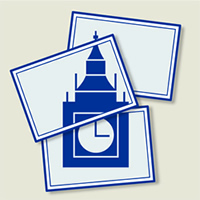Imagine a friend has put together a photo album, but hasn’t labelled the pictures. As you flip through the images, you’re left guessing where they were taken. You might make some fairly accurate estimates – but a new U of T computer program would probably do much better.
Computer science professor Aaron Hertzmann, PhD student Evangelos Kalogerakis and others have developed an algorithm that can analyze a series of photos and determine where they were taken. The program – the first of its kind, Hertzmann says – isn’t designed to identify individual images, although it can make a rough guess at one-off photos. Rather, its power lies in its ability to identify a whole series of images, if it knows the sequence in which they were taken.
Hertzmann’s program exploits the enormous image database of the popular photo-sharing website, Flickr.com. On Flickr, people have the option of “tagging” photos to indicate when and where they were taken. Hertzmann’s program uses these tags – mini-summaries of the photo-taking habits of thousands of Flickr users – to determine where photos were taken.
“If you take a picture of some city street, it could be anywhere in the world,” Hertzmann says. “But if half an hour later you take a picture of Big Ben or the Eiffel Tower, then it becomes much clearer where that first picture was taken.”
On a recent holiday, Hertzmann photographed the Odeon of Herodes Atticus, an ancient Greek amphitheatre in Athens. A day later he photographed a nearly featureless seascape off Santorini, with just a sliver of coastline showing. Taken individually, the program does just fine with the Odeon photo because many people have posted similar shots to Flickr; it puts a dot on a world map at Athens. But the seascape could be anywhere. Without any additional information, the program puts dots all over the world’s seas. Feed the program both photos – along with the time frame in which they were shot – and suddenly it recognizes the seascape as being from the Aegean and puts a dot near Santorini. (The program knows not only that Santorini is close to Athens, but also that it’s a popular target for Flickr photographers who have recently visited Athens.)
Hertzmann imagines many practical uses for the program. Tourism workers and urban planners could benefit from a detailed knowledge of the routes that people take between – and within – cities. And health-care professionals could use it to help fight epidemics, especially if the photo-taking data is combined with information such as air travel routes and cellphone usage.
Recent Posts
For Greener Buildings, We Need to Rethink How We Construct Them
To meet its pledge to be carbon neutral by 2050, Canada needs to cut emissions from the construction industry. Architecture prof Kelly Doran has ideas
U of T’s 197th Birthday Quiz
Test your knowledge of all things U of T in honour of the university’s 197th anniversary on March 15!
Are Cold Plunges Good for You?
Research suggests they are, in three ways






One Response to “ Computer Vision ”
Another blow to privacy! What's next? Using Google's enormous "Street View" database to determine where individuals live, based on the photos they've taken?